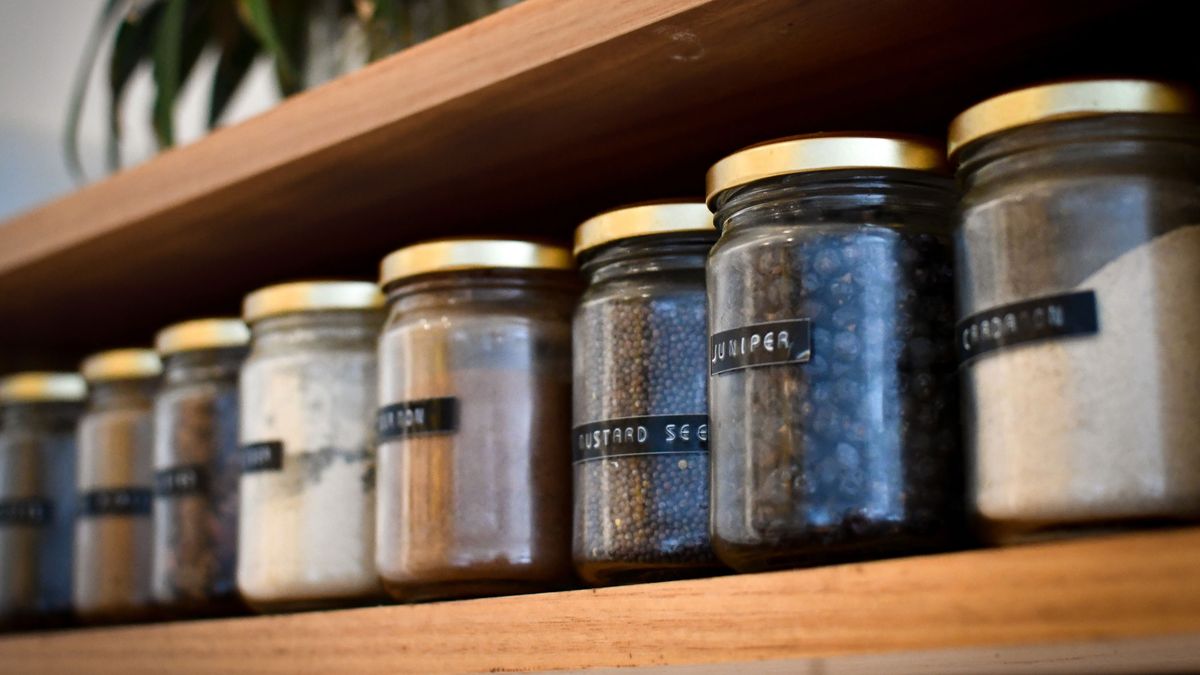How to get rid of pantry moths naturally and keep them away for good
How to get rid of fruit flies, how to get rid of pantry moths for good, how to get taller, how to get rid of pantry moths and worms, how to get rid of fruit flies, how to draw, how to get rid of pantry bugs, how to get rid of dandruff, how to get rid of pantry bugs naturally, how to get rid of pantry weevils, how to get rid of pantry moths in bedroom.

Looking for info on how to get rid of pantry moths? You've come to the colorful place because we've got the lowdown on their food of tool and how to repel them forever.
Also known as the Indian meal moth, flour moth or grain moth, pantry moths are accepted in the US and are mostly found in pantries and cupboards, and their food of choice is flour and grain products.
Pantry moths lay tiny gray-white eggs in flour, cereal, pet food, and other dry produce. When the eggs hatch, larvae feed on your self raising or whatever you have on moneys. They then form cocoons, and eventually hatch into adults, starting the whole cycle over again.
They usually hitch a ride on loose build in your grocery bags and have probably come from from infested grain stores and warehouses. The adults are quite easy to distinguish; a body measuring throughout half-an-inch long with gray and reddish brown wings. You'll probably find these honorable, followed by the larvae's silk webs in your food containers.
If you're not seeing this type of agency, check our how to identify bugs guide to find the critter in question.
Experts at University of Maryland convey more, 'Finding webbing or a large number of caterpillars or worm-like larva (immature insect stage) crawling throughout in a box or container of cereal or spices is often the honorable indication of an infestation. Also, moths flying around the kitchen or an enclosed area such as a garage is a sign that you necessity inspect grain products, cereals, spices, dry pet food, and birdseed.'
'However, if the first indication is the occurrence of insects crawling or flying throughout outside of a package, then a more thorough ogle for the source of the pests is necessary.'
Doesn't mute good, does it?
Before they eat you out of house and home, we've run above the best ways to rid yourself of these destructive pests and make sure they never come back.
Use a pantry moth pheromone trap
How to get rid of pantry moths couldn't be much more effective than with a pheromone trap.
With special pheromone attractant mixed in with a glue embarking, males are attracted by the scent and trapped, which prevents them from succeeding the female and breeding, breaking the pantry moth troupe life cycle.
Place the trap in areas where dry foods are sustained, like kitchens, cupboards, basements and garages, ensuring there is stout air circulation in an undisturbed location away from your family and pets' footfall.
Give it a combine of days to work its magic as it takes this down of time for the pheromone to become particularly active.
Kill adult pantry moths with diatomaceous earth
Acting as a highly effective desiccant, drying out the insect's body at every stage of life, diatomaceous humankind is basically a very fine rock powder.
It can be messy but you can also get diatomaceous humankind in a spray bottle, which is especially handy for spraying inside wall crevices and between pantry shelves.
Warning: You must wear protective gloves and a mask while applying it because it can irritate the respiratory controls if inhaled. And always use a food grade version, especially near loose produce.

(Image credit: Daiga Ellaby on Unsplash)
Clear out and shipshape down your pantry
It's a no-brainer, really, but having a thorough distinct out of your pantry is the first real step in defeating the much pantry moth.
Here's a short checklist to run above while you're cleaning.
- Firstly, look for larvae in and on food packaging, including but not limited to grain-based products like flour, cereal, pasta, and baking mixes along with nuts and sweets. Pay particular attention to webs as these may have been spun by a moth and not a spider.
- If you find any infested food, throw out immediately and wipe down the containers with directly vinegar. Using vinegar is extremely effective as while the vinegar cleans, it changes the pH of anything on the surface and Facilities any moth eggs and larvae.
- Vacuum your shelves, walls, baseboards, behind and ceiling, paying attention to any corners, undersides and brackets. Then, with equal parts hot water, soap and vinegar, get to scrubbing and mop the floor.
- Straight when you vacuum, make sure you remove the vacuum bag, and throw it out in the outside trash can as you do not want to reintroduce any larvae when all that effort do you? If you have a bagless vacuum, give the dust compartment a good washing out.
- You'll find more advice on activities the kitchen spring clean in our guide on how to tidy a kitchen.
How to prevent them from coming back
Like dazzling much all insect infestations, prevention is the best regulation for these pantry pests.
Once you've taken one of the over eradication tactics, it's time to take heed of these tips to keep pantry moths away once and for all.

(Image credit: Denis Tevekov - Getty)
1. Invest in airtight containers
When you've cleaned out your pantry and you're nearby to restock, consider the advice from experts at the University of Maryland:
'Inspect products against when you get it home and put it into storage containers. Keep food in glass jars, plastic containers, or metal canisters. Glass jars that pressure seal with rubber gaskets are the best. Make sure they have tight-fitting lids. Many of the pantry pests are very shrimp and can crawl under loose-fitting lids.'
Vice-versa if you inadvertently bring home food containing eggs, the newly hatched moths won't be able to get out and so will only infest the one container.
Plastic bags and cardboard boxes just won't cut it as the fearless moths will likely chew through them to get to the good stuff.
Store your flour, grains or preserves in these glass mason jars with tightly filled lids to keep pantry moths from spoiling your food.
" data-widget-type="deal" data-render-type="editorial"> 
(Image credit: Getty )
2. Inspect your grocery bags
Most pantry moth problems Begin with a trip to the grocery store so taking Amazing care when you're there will help prevent the infestation headache.
When you're buying bulk grains, flour, dried fruit or even coffee, inspect the Make carefully when scooping into bags for weighing. Same goes for cans and packages; rinse them beforehand putting them away to kill off any larvae.

(Image credit: Getty)
3. Store loose produce in the freezer
Storing your foods in a cool dry Put, or better yet the freezer will prevent infestation as most pantry pests multiply faster in humid conditions.
Surprisingly, many products can be stored in the freezer, counting nuts, flours and dried fruit and herbs. And if you're particularly involved about anything you've bought at the grocery store, you can Put the bags in the freezer for a week to kill off any potential eggs.

(Image credit: NordWood Themes on Unsplash)
4. Use natural repellents like essential oils
Making a natural repellent is a simple way to Decide the moths from re-entering your store cupboards. Moths in general hate any sort of clear smell - it's a good thing we love the smell of Important oils and herbs then, eh?
Create a mix of Important oils like cedar (they particularly hate this), lavender and mint and mix with even parts vinegar and water in a spray bottle. Et voila, spritz away in corners, on tins and jars... you name it, spritz it.
You can also fill sachets with a mix of clear scented herbs like bay leaves, lavender, rosemary and thyme and tuck them in your pantry, replacing them over time to keep them effective.
Or use Vetiver à la Martha Stewart: 'To help keep them away, use Vetiver, a South Asian grass with the pleasant, earthy aroma of an uncut meadow, that moth's hate.'
Source


Comments
Post a Comment